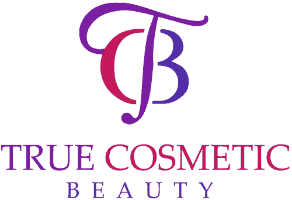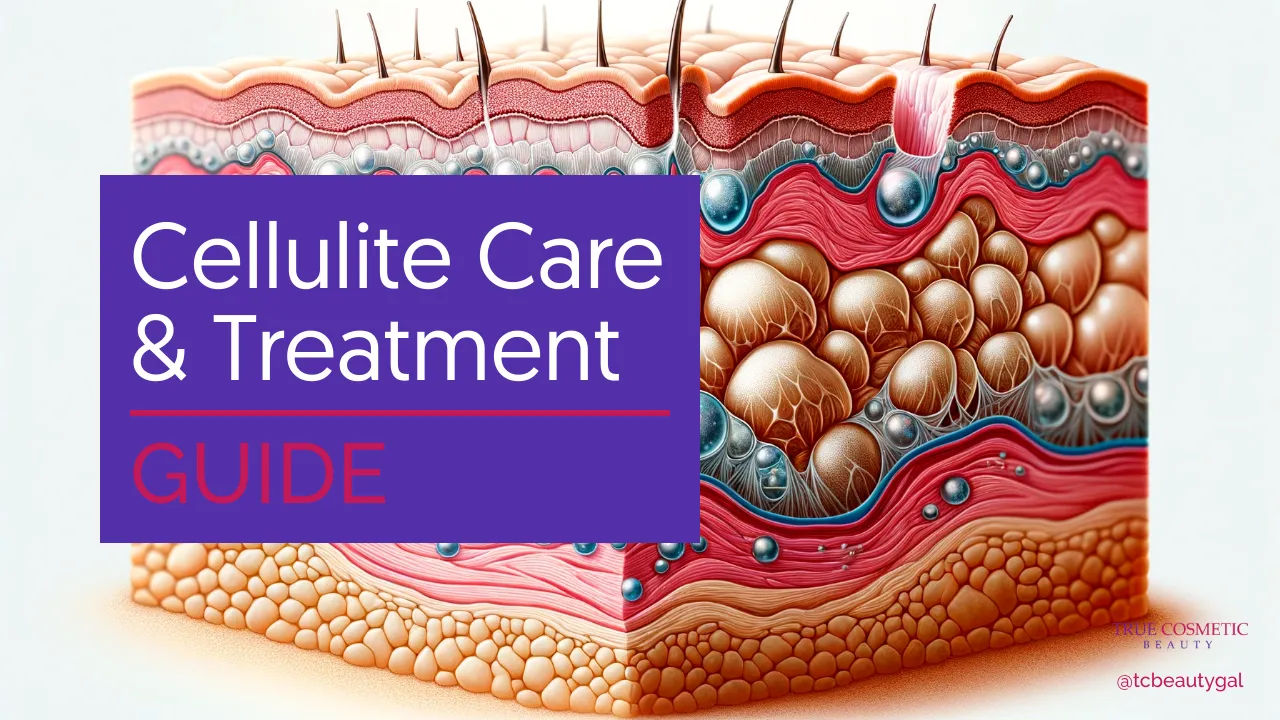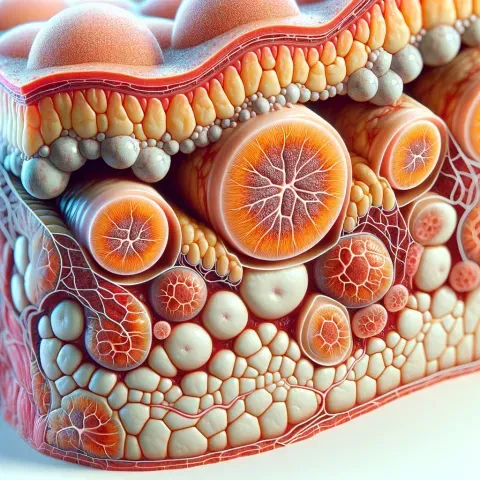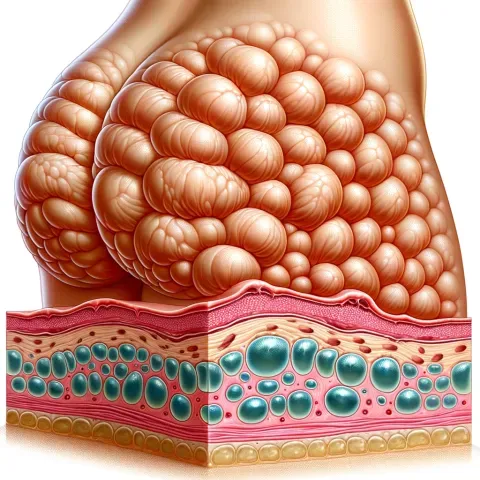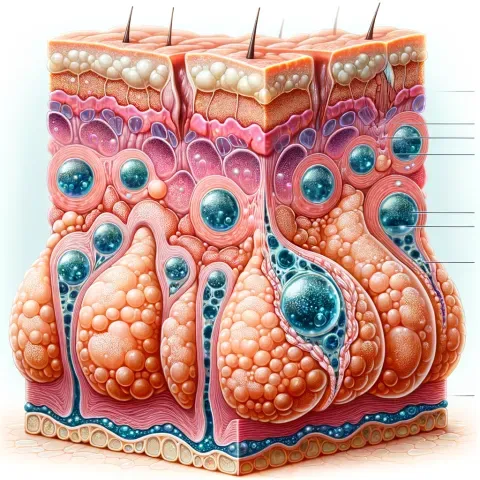Comprehensive Guide to Cellulite Care and Treatment – Understanding, Managing, and Reducing Cellulite
Welcome to our guide to cellulite care and treatment. Cellulite is a common condition that affects many individuals, causing dimpling and uneven skin texture.
This guide is designed to provide you with a complete understanding of cellulite and how to manage and reduce its appearance.
In this guide, we will delve into the science behind cellulite, explore various treatment options, and provide you with practical tips for managing and reducing cellulite.
Whether you’re looking to learn more about this common condition or seeking effective treatments, this guide will equip you with the knowledge and tools you need to take control of your cellulite care.
So, let’s dive in and empower you to tackle and conquer cellulite once and for all.
Key Takeaways
- Cellulite is a common condition: Understand that cellulite is a normal occurrence and affects individuals of all shapes and sizes, often due to genetic and hormonal factors.
- Healthy lifestyle is key: Managing cellulite involves adopting a healthy lifestyle, including regular exercise, a balanced diet, and staying hydrated to reduce its appearance.
- Various treatment options: There are numerous treatment options available to help manage and reduce cellulite, such as topical creams, massage therapies, and medical procedures like laser treatments and radiofrequency therapy.
- Understanding the causes: Educate yourself about the various factors that contribute to the development of cellulite, including poor circulation, hormonal changes, and connective tissue structure.
- Patience is key: Recognize that reducing cellulite takes time and consistency, and it’s important to stay patient and committed to your treatment plan for long-term results.
Types of Cellulite
Some types of cellulite are:
- Adipose cellulite
- Oedematous cellulite
- Fibrotic cellulite
- Secondary cellulite
Recognizing the type of cellulite you have is crucial in developing an effective treatment plan. Understanding the characteristics of each type can help you address the issue more effectively.
Adipose Cellulite
Adipose cellulite is characterized by excess fat accumulation in the subcutaneous tissue. It often appears in areas with high fat storage, such as the thighs, hips, and buttocks. This type of cellulite is commonly seen in both men and women.
Oedematous Cellulite
Oedematous cellulite is associated with fluid retention and swelling. It gives the skin a puffy appearance and is often linked to poor circulation and a sedentary lifestyle. Oedematous cellulite is typically soft to the touch and can cause discomfort and heaviness in the affected areas.
Fibrotic Cellulite
Fibrotic cellulite is characterized by the hardening of the connective tissue, resulting in a dimpled or orange-peel texture on the skin. It is often the most stubborn type of cellulite to treat, as the hardened fibrous bands can create deep and resistant dimples.
Secondary Cellulite
Secondary cellulite is typically caused by hormonal imbalances, medications, genetic factors, or lifestyle choices. It can occur in individuals of all body types and often presents in specific areas, such as the arms, abdomen, or back. Addressing the underlying cause is crucial in effectively managing secondary cellulite.
Factors Influencing Cellulite
Now, let’s delve into the various factors that influence the development and appearance of cellulite. Understanding these factors is crucial in identifying the best approaches to managing and reducing cellulite on your body.
- Genetics
- Lifestyle choices
- Environmental factors
Knowing how these factors impact the formation of cellulite can empower you to make informed decisions about your cellulite care.
Genetic Factors
Genetic predisposition plays a significant role in the development of cellulite. If your parents have cellulite, you are more likely to develop it as well. Other genetic factors such as metabolism and fat distribution can also contribute to the formation of cellulite.
Recognizing the influence of genetics on cellulite can help you understand why you may be more prone to its appearance.
Lifestyle Factors
Your lifestyle choices can greatly affect the development and visibility of cellulite on your body. Factors such as diet, exercise habits, and smoking can all impact the formation of cellulite.
The decisions you make on a daily basis have a direct impact on the prevalence of cellulite on your body.
Environmental Factors
Any exposure to harmful toxins, pollutants, and unhealthy lifestyle environments can contribute to the development of cellulite. Additionally, factors such as stress and hormonal fluctuations can also influence the appearance of cellulite.
Understanding the environmental factors that can exacerbate cellulite can help you make changes to minimize their impact on your body.
Cellulite Care: Step-by-Step Guide
Despite popular belief, cellulite is a common condition that affects many individuals, irrespective of gender or body type. To effectively care for and manage your cellulite, it’s essential to understand the specific type of cellulite you have and create a tailored plan to address it. Here is a step-by-step guide to help you effectively manage your cellulite.
Step 1: Identifying Your Cellulite Type
Understanding the type of cellulite you have is crucial in determining an effective management strategy. There are generally three main types of cellulite: adipose, edematous, and fibrotic.
Adipose cellulite is characterized by excess fat, edematous cellulite is due to fluid retention, and fibrotic cellulite is caused by fibrous bands that pull down on the skin, creating a dimpled appearance. By identifying which type of cellulite you have, you can better target your treatment plan to address the root cause.
Step 2: Creating a Cellulite Management Plan
Once you have identified your cellulite type, it’s time to create a personalized management plan. This may include a combination of lifestyle changes, such as adopting a healthy diet and regular exercise, as well as targeted treatments such as massage, topical creams, or professional procedures. Your plan should be tailored to your specific cellulite type and may require the expertise of a healthcare professional who specializes in cellulite treatment.
Step 3: Monitoring Progress & Adjusting the Plan
As you begin implementing your cellulite management plan, it’s important to monitor your progress regularly. Keep track of any changes in the appearance of your cellulite and note any improvements or setbacks. Based on your observations, you may need to adjust your plan accordingly.
This could involve altering your exercise routine, trying new treatments, or seeking further guidance from a healthcare professional.
Step 4: Maintaining a Cellulite-Free Lifestyle
Once you have effectively managed your cellulite, it’s crucial to maintain a healthy lifestyle to prevent its return. This includes staying active, eating a balanced diet, staying hydrated, and avoiding habits that can contribute to cellulite formation, such as smoking and excessive alcohol consumption.
By consistently maintaining a cellulite-free lifestyle, you can effectively keep cellulite at bay and enjoy smoother, firmer skin.
Tips for Reducing Cellulite
After understanding what cellulite is and its causes, you are eager to learn how to manage and reduce it. Here are some tips to help you on your journey to smoother skin:
- Eat a healthy, balanced diet rich in fruits, vegetables, and whole grains
- Stay hydrated by drinking plenty of water
- Engage in regular exercise to improve circulation and tone muscles
- Consider professional treatment options such as massage, laser therapy, or radiofrequency treatments
Knowing how to properly care for your body is the key to reducing the appearance of cellulite.
Diet and Nutrition Tips
When it comes to reducing cellulite, diet and nutrition play a crucial role. Incorporating the following tips into your daily routine can help improve the appearance of your skin:
- Consume foods high in antioxidants, such as berries and green tea
- Avoid processed foods and limit your intake of sugar and sodium
Recognizing the impact of your diet is the first step toward addressing cellulite.
Exercise and Physical Activity Tips
Regular exercise and physical activity are essential for reducing cellulite. Consider incorporating the following tips into your fitness routine:
- Focus on strength training to build muscle and improve skin tone
- Include cardiovascular exercises to boost circulation and promote fat loss
Though it may require effort, regular physical activity is crucial for managing cellulite.
Skin Care and Hygiene Tips
Proper skin care and hygiene are also important factors in reducing cellulite. Here are some tips to help you maintain healthy skin:
- Exfoliate regularly to promote circulation and remove dead skin cells
- Moisturize daily to keep your skin hydrated and supple
Perceiving the importance of skin care is essential for reducing the appearance of cellulite. Remember, consistency is key.
Pros and Cons of Different Cellulite Treatments
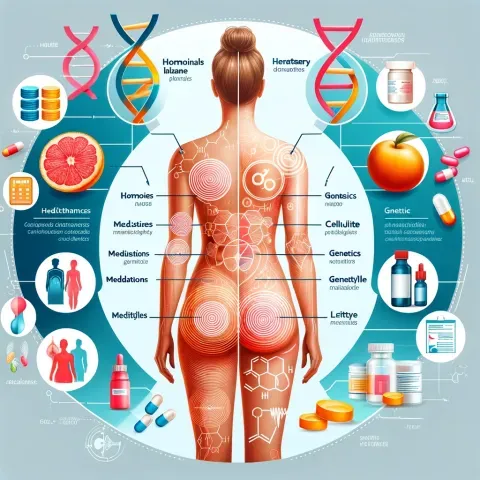
To effectively manage and reduce cellulite, it is important to understand the various treatment options available. Each treatment comes with its own set of pros and cons, and it’s crucial to weigh these factors carefully before making a decision.
Below, we have broken down the pros and cons of different cellulite treatments into a table with two columns, highlighting the key aspects to consider.
Pros and Cons of Topical Treatments
Topical treatments, such as creams and gels, are easily accessible and can be used in the comfort of your own home. They often contain ingredients that claim to improve skin texture and reduce the appearance of cellulite.
However, the effectiveness of these treatments can vary widely, and results may not be long-lasting. Additionally, some individuals may experience skin irritation or allergic reactions to certain ingredients.
Pros and Cons of Laser and Radiofrequency Treatments
Laser and radiofrequency treatments are minimally invasive procedures that target cellulite beneath the skin’s surface. These treatments can stimulate collagen production and improve skin elasticity, leading to a reduction in cellulite.
However, they may require multiple sessions to achieve the desired results, and there are potential risks such as skin burns or changes in skin pigmentation. It’s important to consult with a qualified practitioner to determine if these treatments are suitable for you.
Pros and Cons of Liposuction and Body Shaping Procedures
Liposuction and body shaping procedures are more aggressive approaches to reducing cellulite and reshaping the body. They involve the removal of fat deposits through surgery or non-invasive techniques.
While these procedures can provide significant improvement in body contouring, there are associated risks such as infection, swelling, and uneven results. It’s essential to thoroughly evaluate the potential benefits and drawbacks before considering these treatments.
Pros and Cons of Natural/Alternative Treatments
Natural and alternative treatments for cellulite often focus on lifestyle factors, such as diet, exercise, and body detoxification. These approaches promote overall health and wellness, which can contribute to reducing the appearance of cellulite.
However, the results from these treatments may not be as dramatic as more invasive options, and they require a commitment to long-term lifestyle changes. It’s important to be cautious of extravagant claims and seek evidence-based information when considering natural and alternative treatments.
Case Studies: Successful Cellulite Management
Your comprehensive guide to cellulite care and treatment would not be complete without real-life examples of successful cellulite management. Here are some case studies that illustrate how individuals have effectively managed and reduced their cellulite.
- Case Study 1: A 35-year-old woman successfully reduced the appearance of cellulite on her thighs and buttocks by 40% through a combination of targeted exercise, dry brushing, and dietary modifications. Over a period of six months, she lost 15 pounds and increased muscle tone, leading to a significant improvement in the appearance of cellulite.
- Case Study 2: A 45-year-old man saw a noticeable reduction in cellulite on his abdomen and flanks after undergoing a series of mesotherapy treatments. After six sessions, he experienced an 30% reduction in the appearance of cellulite, along with improved skin texture and tightness.
- Case Study 3: A 28-year-old woman effectively managed her cellulite through a combination of lifestyle modifications, including regular exercise, a healthy diet, and stress-reducing activities such as yoga and meditation. Over the course of one year, she saw a 50% reduction in the appearance of cellulite on her thighs and hips.
Case Study: Lifestyle Modification
Your lifestyle plays a crucial role in managing cellulite. In one case study, a woman successfully reduced the appearance of cellulite through lifestyle modifications such as regular exercise, healthy eating, and stress reduction activities. By adopting a healthier lifestyle, she experienced significant improvement in the appearance of cellulite over time.
Case Study: Topical Treatment
Topical treatments can also be effective in managing cellulite. In a particular case study, a woman saw a noticeable reduction in cellulite after using a targeted anti-cellulite cream for several months. The combination of active ingredients and regular application led to improved skin texture and reduced dimpling.
Case Study: Medical Procedures
For some individuals, medical procedures may be necessary to effectively manage cellulite. In one case study, a man underwent a series of mesotherapy treatments and experienced a significant reduction in cellulite on his abdomen and flanks. The targeted injections led to improved skin texture and a reduction in the appearance of cellulite.
Comprehensive Guide to Cellulite Care and Treatment – Understanding, Managing, and Reducing Cellulite
Conclusively, understanding cellulite and its causes is the first step in effectively managing and reducing its appearance. By adopting a healthy lifestyle, including regular exercise and a balanced diet, you can work towards reducing the appearance of cellulite.
Additionally, considering professional treatments such as massage therapy, laser therapy, or topical creams can also be effective in managing cellulite. Remember that reducing cellulite takes time and consistency, so be patient and stay dedicated to your self-care routine.
As you continue on your journey to understanding and managing cellulite, it’s important to consult with a healthcare professional to establish the best approach for your individual needs.
By staying proactive and committed to your cellulite care and treatment plan, you can work towards achieving smoother, healthier-looking skin. With the right knowledge and resources, you can take control of your cellulite and feel confident in your skin once again.
FAQ
Q: What is cellulite and what causes it?
A: Cellulite is a condition in which the skin appears to have areas with underlying fat deposits, giving it a dimpled, lumpy appearance. It is most commonly found on the thighs, buttocks, and abdomen. The exact cause of cellulite is not well understood, but it is thought to result from a combination of genetic, hormonal, and lifestyle factors.
Q: What are the best ways to manage and reduce cellulite?
A: Managing and reducing cellulite involves a combination of lifestyle changes, skincare, and medical treatments. Eating a healthy diet low in fat and high in fiber, exercising regularly, staying hydrated, and avoiding smoking and excessive alcohol consumption can all help.
Skincare treatments such as massage, dry brushing, and the use of topical creams and oils can also be beneficial. In more severe cases, medical treatments such as laser therapy, radiofrequency treatments, or liposuction may be considered.
Q: Are there any effective home remedies for cellulite?
A: While there are many home remedies and do-it-yourself treatments for cellulite, their effectiveness can vary. Some people find success with treatments such as coffee scrubs, apple cider vinegar wraps, or essential oils.
However, it’s important to remember that these remedies may not work for everyone, and it’s essential to approach them with caution and consult with a healthcare professional before trying them.
Q: Can cellulite be completely eliminated?
A: While there is no guaranteed way to completely eliminate cellulite, many people find success in reducing its appearance through a combination of lifestyle changes, skincare, and medical treatments. It’s essential to have realistic expectations and understand that cellulite is a common condition that affects many people, regardless of their body shape or size.
Q: How can I prevent cellulite from developing in the first place?
A: While it may not be possible to prevent cellulite entirely, there are steps you can take to minimize its development. Maintaining a healthy weight, eating a balanced diet, staying hydrated, exercising regularly, and avoiding smoking and excessive alcohol can all contribute to reducing the risk of cellulite. Additionally, wearing comfortable, non-constricting clothing and practicing good skincare habits can also help.
